[CoachCorner] Metabolic Testing: VO2max, Running Economy, Substrate Utilization, and Ventilatory Thresholds
A round of baseline testing at The Brisighella Lab.
As part of the work I do with the athletes I coach, I’ve started putting together a few protocols to look at aspects of our physiology that can be indicative of progress (or lack thereof) in our journey to become better long distance endurance athletes.
In this context, I’ve discussed in the past how most things, especially on the high-end of the spectrum (e.g. our second threshold), can be derived from training data and without dedicated testing. This is the type of work I do daily when analyzing individual sessions I prescribe.
On the other hand, I’ve also covered how certain aspects can only be assessed with testing. As I build my own lab in Brisighella, a must have for me was certainly a high-end metabolic cart. In particular, I picked a Cosmed device, as this is a brand I’ve relied on for many many years (since doing my PhD with a Cosmed K4 back in 2010), and is considered the gold standard for sports science and clinical studies.
Back to our testing. What can we use a metabolic cart for, beyond the obvious (e.g. VO2max)?
The aspect that interests me the most is certainly substrate utilization, or what we can also call metabolic flexibility, i.e. our ability to utilize fats and carbohydrates in different quantities depending on the demands of the effort.
I love how metabolic flexibility is a blend of training and nutrition, somewhat making a more holistic approach to training obvious and measurable. Needless to say, assessing metabolic flexibility does require metabolic testing. I’ve played with this quite a bit in the past year, to look not only at best case scenarios, but also at the robustness of our metabolism, and I will report some insights below.
Additionally, running economy, or how much energy we expend to sustain a given pace, also requires metabolic testing for accurate assessment. This is something we can have some fun with now that the world of running footwear has changed so much, e.g. analyzing how much we gain with different models of shoes, if anything at all. We can also put to the test certain hypothesis, if we have access to more frequent testing ( e.g. do strides and sprints really improve our running economy? how about strength training?).
Finally, I’ve also discussed how both for “testing in general” and for lactate testing specifically, one of the main use cases I see is better understanding the boundary between easy and not-so-easy work, or the high-end of Zone 2, in my system. We can use ventilation to do the same, and determine the first ventilatory threshold, which might help us fine tune training or racing in the context of very long distance events such as ultramarathons.
Let’s now look at a bit more in detail at all of the above, with the data I collected in the past few weeks. More updates will follow, keep an eye here or on my Strava for more data (or join my athlete roster if you’d like to be tested at no cost anytime you can come to our little town!).
Maximal oxygen uptake, or VO2max
VO2max is probably the least interesting parameter we can measure with a metabolic cart (don’t tell your favorite podcasters). However, incremental tests can also be used to look at our strengths and weaknesses as endurance athletes, to a certain extent (e.g. % of VO2max at which we cross different metabolic domains, i.e. our first and second ventilatory thresholds, plus our ceiling, max itself), as well as in broad strokes at our metabolic flexibility.
Keep in mind that “broad strokes” are the keywords here. No maximal test can tell you with precision where are your thresholds or what is your economy or how much fat you are burning, because the nature of the test is that you are never in a steady state, and most of what you derive is likely an overestimation of what is actually possible if you were to spend more time in each stage. Thresholds estimated this way can be flattering, don’t get fooled so easily and simply use the test to assess progress over time (with a consistent protocol and measurement device), more than to capture potential performance, which is unlikely to be accurate when derived from short maximal tests.
Disclaimer aside, it can be useful to know your max, at what % you see major disruptions in your metabolism (as captured by oxygen and carbon dioxide dynamics), and your crossover point (or lack thereof, due to either very poor fat or carbohydrate oxidation, both issues possibly detrimental for long distance endurance performance, and deriving from different root causes, e.g. training history and dietary choices), and how these parameters change over time with proper training and nutrition.
The protocol I use for VO2max assessment is the following:
warmup (5-10 minutes very easy effort)
start test at warm up pace, setting the treadmill incline at 2%
increment speed by 1 km/h every 2 minutes
This test allows to cover a very broad range of intensities (from very easy to maximal) in the typical 10-12 minutes that a VO2max test should take. I use the incline mostly to limit maximal speed, and could even bring it to 3-4% for mountain runners or runners that are used to running hard uphill, while I limit it to 2% for others as I do not want the test to be stopped because of peripheral limitations (this is why I would never use a test that increases grade each step or a cycling test for a runner - the legs would be the limiter, not the cardiorespiratory system).
Here is my data, I didn’t really have the mental energy to dig deep on this day, but I was close enough:
Here I just want to highlight one thing: there is always a lot of nuance in metabolic data. For example, when showing the results above, I got a few comments highlighting how this is an ‘excellent’ VO2max. However, what we see here is not really great potential but a very inefficient / uneconomical system, burning lots of energy for ‘little’ work. VO2max is talked a lot in the context of longevity these days, and I would go as far as saying that an inflated VO2max because of poor economy might be indicative of lower longevity despite the high absolute value: burning lots of energy while doing nothing doesn’t make for a long life. I’m clearly such a glass half full kind of person as you can see, but if you are taking anything from this, keep in mind that physiology is never as simple as it looks: make sure to work with people that have a good understanding of the tools as well as of your physiology and yourself as an athlete, if you want to get something useful out of testing.
Metabolic Flexibility: Fat and Carbohydrates Oxidation
As you might know, I’ve been heavily periodizing my diet to improve my ultramarathon performance, given that metabolic flexibility was lacking, something that could explain my inability to translate short distance performance into long distance performance. I therefore embarked in an experiment that I described in greater detail here, should you be interested.
The experiment worked really well, fat oxidation improved, and most importantly, performance in ultramarathons improved despite no detectable change in any other performance markers or in my actual performance over shorter distances (as it should be, since this specific metabolic change cannot impact positively anything that is shorter than e.g. a marathon, since glycogen stores would not run out during shorter events, even if you are burning only carbohydrates, as I was doing).
During this experiment, I had to fly blind for long stretches, as metabolic testing wasn’t something I could do frequently. However, on the high-end of the spectrum, for hard workouts, I could clearly see nothing was compromised, given my performance. This is as expected since I was always fueling my hard sessions with plenty of carbohydrates, and limiting my intake only on the remaining days.
[Special thanks to Sam Impley, Mikki Williden, Marco Perugini, Scott Tindal, Aitor Viribay, and others who spent their time discussing these aspects with me in the past year, and from whom I learned a lot]
All of the above was rather obvious: there are no risks if nutrition is periodized, in fact, the only criticism this approach gets is that it can be impractical, which I can certainly agree with, especially if your household is not on the same diet or training. In my case, I was fortunate that Alessandra prepares the same races I prepare, and was in the mood for a bit of experimenting as well (eventually also improving dramatically her fat oxidation and her ultramarathon performance).
Here is the breakdown of fat and carbohydrate oxidation during the incremental test:
And below is the same data but used to display the crossover point:
A year ago I had no crossover point, basically. This was due to a chronically high carbohydrate diet, which in turn compromised my performance in ultra endurance events. It can be fixed, but the work must be done in the kitchen.
So far we have cleared the following, after several months of periodized nutrition:
no issues in carbohydrate oxidation at high intensity
large improvement in fat oxidation across the board, including moderate intensities at which I race e.g. a 50 km (just above LT1)
improvement in performance in ultra endurance events
However, I still had plenty of doubts, given my somewhat analytical or quantitative nature, having to ‘believe’ in something without checking, wasn’t ideal. Additionally, seeing in training and racing that the process was working, only led to a more polarized approach, which at the end of the day, might not have been necessary. We know a few things about the impact of acute (e.g. pre-training or for a few days as in carbo-loading pre-race) and chronic (as in our diet) carbohydrate intake on fat oxidation, but many doubts remain, with what I consider now many misconceptions, still being enforced, even by well-known nutritionists, at times:
what is the impact of acute carbohydrate intake?
do you need to eat low carb for fat oxidation to do its thing and do we suppress it meaningfully when doing otherwise? (Consider the implications of this for racing).
how much can fat oxidation change for an individual?
You see where I’m going with this. Can we periodize nutrition less and still have 90% of the gains? Does the chronic diet trump acute intake?
The data below was collected after a low carb breakfast and shows pretty much the same values I had during the maximal test (which was fueled with high carbohydrate intake for breakfast and in the prior dinner).
Hence after many tests, my answer is the following: acute carbohydrate intake has minimal / negligible impact on fat oxidation if our chronic diet is periodized. On most days I cannot see any difference in fat oxidation regardless of what I ate for breakfast (e.g. an omelette vs 120 grams of oats) or the previous dinner, because fat oxidation and metabolism in general are robust, given chronic exposure to a certain diet.
Working on improving fat oxidation will require training under conditions that stimulate that pathway (i.e. with lower carb intake), but on race day you should not worry about having more carbohydrates: your work will stay with you. This is somewhat obvious: if it was the other way around, our diet would be irrelevant, and the only thing that mattered would be our last meal before an event, which of course, makes no sense. Our diet matters, and we can have the best of both worlds by periodizing our diet and then having higher carb intake on race day or prior to race day to ensure full glycogen stores, stable blood sugar, etc. when we compete.
Now, there’s of course a limit to that as well. As it took only 8 weeks to develop strong fat oxidation (as covered here), reverting back to a daily high-carb diet for long enough will shift things in the other direction and deteriorate metabolic flexibility. I did this experiment recently, eating a diet similar to what I used to eat in the past (i.e. high-carb daily), for about a week, and indeed, fat oxidation was reduced by about 50%:
These dynamics are important to know because they allow us to plan training and nutrition differently around an event. For an ultramarathon, it makes more sense to me to eat high-carb only a day or two prior to the race, as I want to maximize fat oxidation if I’m going to be out there 8-10 hours. On the other hand, for a marathon, I might want to eat differently a few days earlier and reduce it, if the reduction in fat oxidation comes with a slight increase in running economy, as it often is the case. This is because glycogen stores are limited and will certainly be depleted in an ultramarathon, and as such, the more fat I can burn, the less intake I need to sustain a given intensity, and therefore there will be lower gastrointestinal distress. For a marathon, assuming fat oxidation is still decent at race pace, a reduction won’t require particularly high exogenous carbohydrate intake because the duration is much shorter (e.g., ~3 hours), and economy tends to have a greater impact. As you can see, there isn’t a perfect diet (or training) that works for every distance, but we need to appreciate the nuance and use the tools at our disposal in relation to our specific goals.
Fat Max
Another term that gets thrown around a lot these days. In my data, there is no clear fat max. My fat oxidation rate is about 0.8-0.9 grams/minute when I start running, and it remains there until the first metabolic or ventilatory threshold, then it reduces a bit (keep in mind that it was 0.1-0.2 prior to changing diet, even at low intensities - same thing for Alessandra, who is now at about 0.6 grams/minute). It then takes a big hit around the second threshold, and flattens to zero at max. There isn’t a magical low intensity that increases fat oxidation, in my data.
This doesn’t really change any of my training: I train very slow or very easy most of the week simply because I am limited from a muscular point of view, and it is impossible for me to do otherwise, unless I start training half the time I normally train, which would then make it impossible to run well ultramarathons, because of the same muscular endurance limitations. This is to say that I don’t run very slow because I think it’s giving me some special benefits, but simply because it is the only way I can accumulate a large volume, and that’s what’s giving me running benefits. This is likely different for a more or less developed athlete, or someone with different limiters.
Data from the maximal test, 2% grade, short steps. When I do longer steps normally I stop at intensities lower than the ones that show a decrement in fat oxidation, hence I am using the VO2max protocol here for illustrative purposes:
Running Economy: Pick Your Racing Shoe
Running economy is the flip side of a ‘high’ VO2max for me, showing rather average data despite a decade and a half of running. It got a lot better, which is the whole point of training, but in absolute terms it remains suboptimal (more data about this, here).
As we all know, these days there’s a shortcut to improve running economy: super shoes. I had little doubt super shoes had been of great help in my marathons, and were probably one of the reasons I was finally able to run sub-3 hours, but it is always interesting to put things to the test, and that’s what I’ve done last week.
In particular, I tested a shoe in which I felt very good, bouncy but stable, and in which I ran some of my best workouts, eventually deciding to use it for the 50 km in Winschoten (in which I also ran a personal best for the distance). This shoe is the Hoka Rocket X3. I also tested a Saucony Endorphin Pro 4, in which I never felt the same responsiveness, but that also features all the key characteristics of top end marathon shoes. Finally, as baseline I tested my favorite long distance shoes, the Saucony Tempus 2, which I used for my 100 km personal best at Passatore. I’ll do some testing also with other daily trainers, just to see if the Tempus is better than those or not (my decision comes of course from other factors as well, comfort, the ability to run many hours without breaking form, etc. - but economy remains an important parameter).
Interestingly, subjective data matched objective data on this one, with the Hoka shoe clearly outperforming the Sauconys:
That sorts it in terms of shoes.
However, the jury is still out on plyometrics, strength training, strides and hill sprints in my case (the published evidence in general is very strong for these elements, hence worth including in training, but I am curious if I can also see some measurable change). For now, I keep doing the work, then we’ll see if I can capture any changes in future tests.
Metabolic Boundaries: First and Second Ventilatory Thresholds
For a deep dive into thresholds, I can highly recommend this article by Keir et al., as here I will not get into too many details.
One of the issues with detecting thresholds is that we do so with maximal tests, or short incremental tests. This is a problem because we quickly pass through different boundaries, without ever reaching a steady state, and typically increasing external load (e.g. pace or power) by large steps, therefore making it unlikely that what we see in the data is representative of what happens when we run for longer at each intensity.
I discussed in my previous blog about lactate how I find more informative ‘constant intensity tests’, in which we spend 10-30 minutes at a given intensity and look at the data. Ventilation is no different, and while we can approximate our metabolic thresholds using a short incremental test, I think it is always insightful to do some additional testing with longer steps around the first threshold, as this is typically the more useful one from a training prescription point of view (the second is easily derivable from training data and cannot really be tested for long, by definition).
In particular, I typically combine the maximal test protocol reported above with a sub maximal test in which I look at intensities around what I think the first threshold should be, for a given person. The protocol goes as follows:
0% grade for the treadmill
start at a slow jog speed
increase by 0.5 or 1 km/h every 5-6 minutes
stop after 20-30 minutes or at moderate intensity, typically before reaching the second threshold
The data above can then be used to look with more accuracy at running economy, substrate utilization and ventilation, to better identify the first ventilatory threshold as well.
In terms of the methods used, I look at a number of parameters, as recommended for this type of data: V-slope (VO2 vs VCO2), VE/VO2, VE/VCO2, etc. - the motivation for this lies in how ventilation, oxygen uptake, and carbon dioxide production change as we cross different intensity zones, or metabolic thresholds, as shown below.
This type of tests require a bit more time but they are low intensity and can be done any day, often providing more useful data than the typical incremental / maximal tests, which are however more common.
Alright, I hope this gives you a good overview of some useful aspects of our physiology that can be analyzed with a metabolic cart, and how these aspects can be tracked over time in relation to changes in our training and/or nutrition.
Thank you for reading and see you at the Brisighella Lab!
Personal Coaching for Runners
If you are interested in working with me, please learn more here, and fill in the athlete intake form, here.
How to Show Your Support
No paywalls here. All my content is and will remain free.
As a HRV4Training user, the best way to help is to sign up for HRV4Training Pro.
Thank you for supporting my work.
Marco holds a PhD cum laude in applied machine learning, a M.Sc. cum laude in computer science engineering, and a M.Sc. cum laude in human movement sciences and high-performance coaching. He is a certified ultrarunning coach.
Marco has published more than 50 papers and patents at the intersection between physiology, health, technology, and human performance.
He is co-founder of HRV4Training, advisor at Oura, guest lecturer at VU Amsterdam, and editor for IEEE Pervasive Computing Magazine. He loves running.
Social:
Personal Substack
Instagram


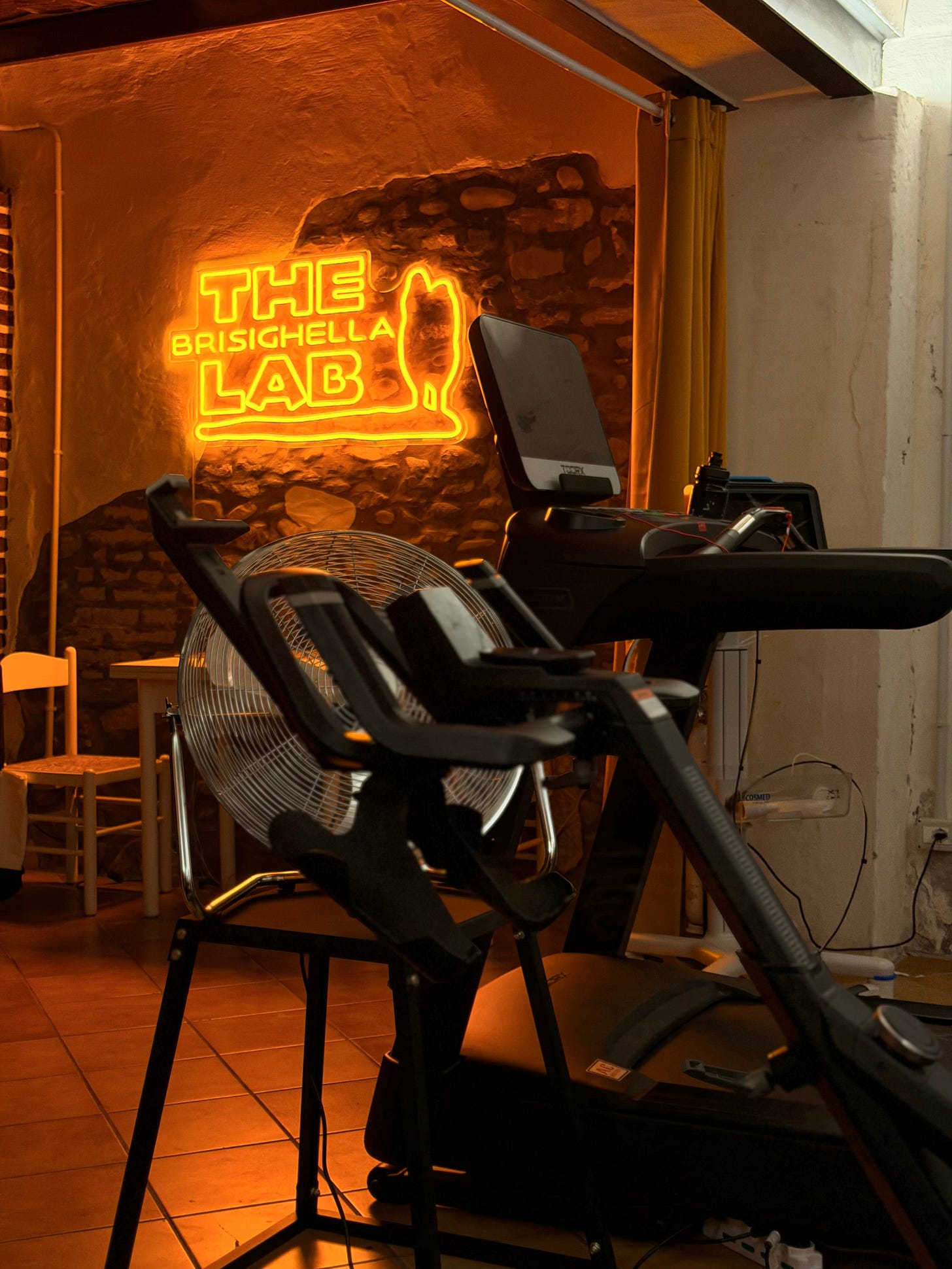

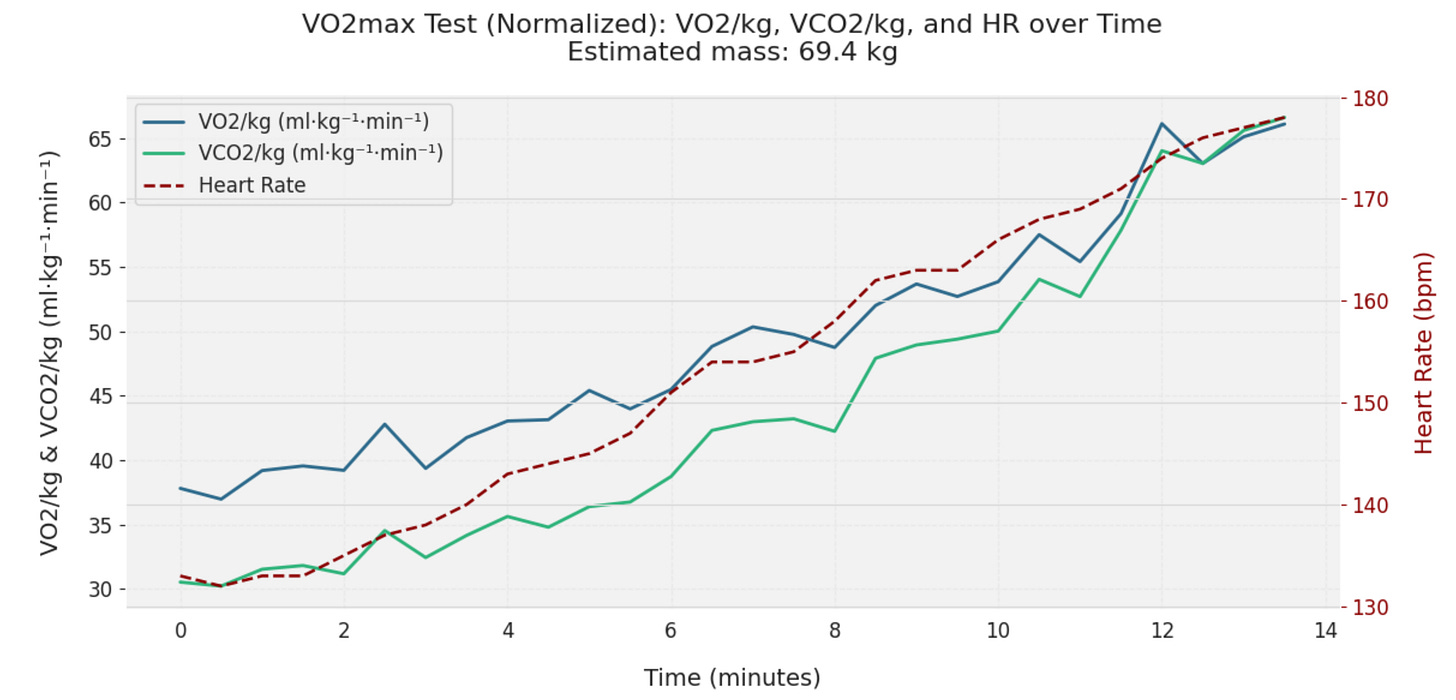

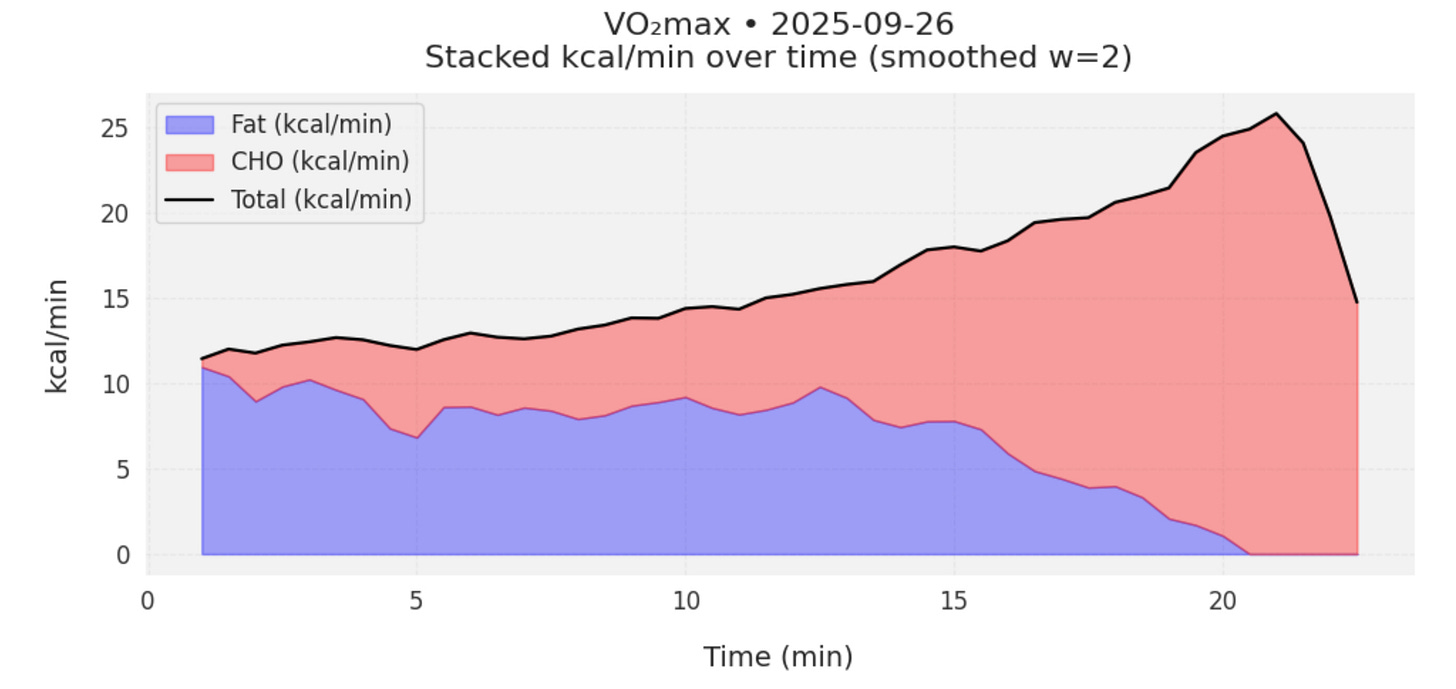
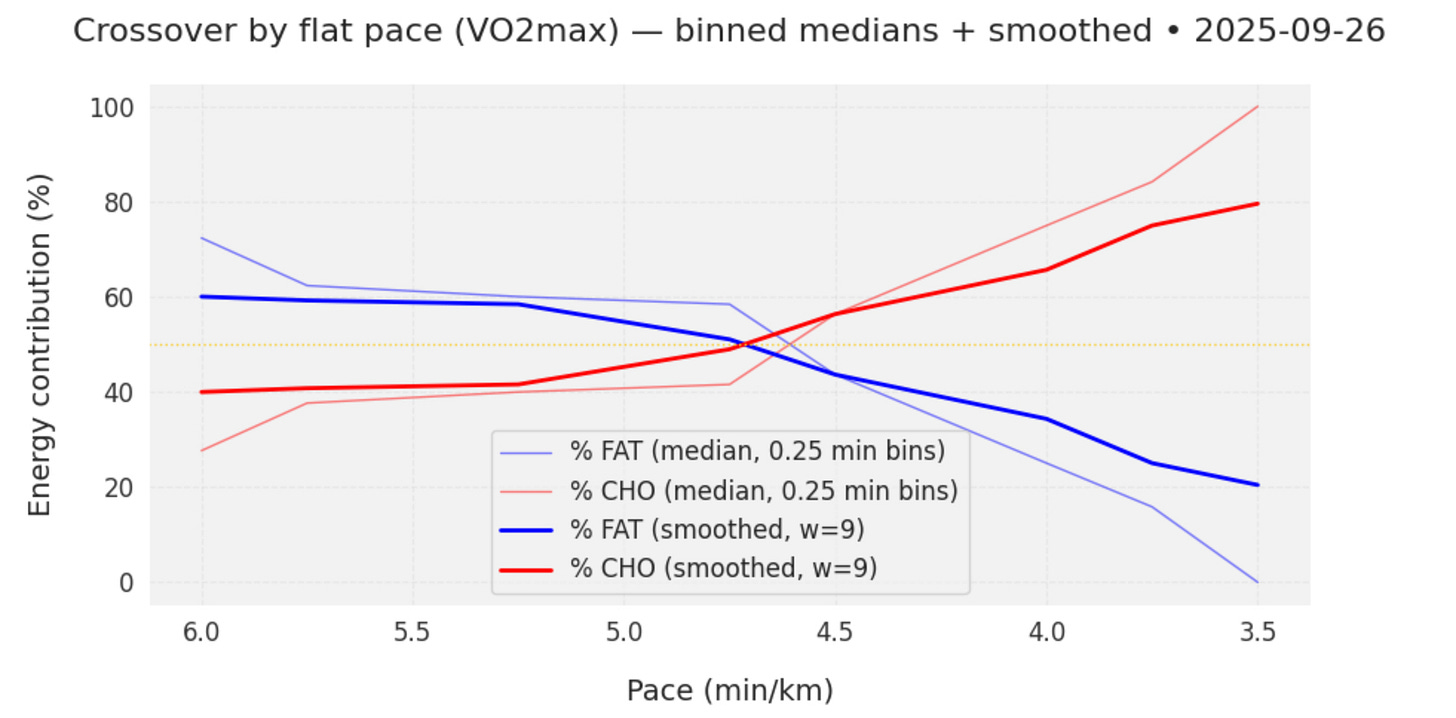
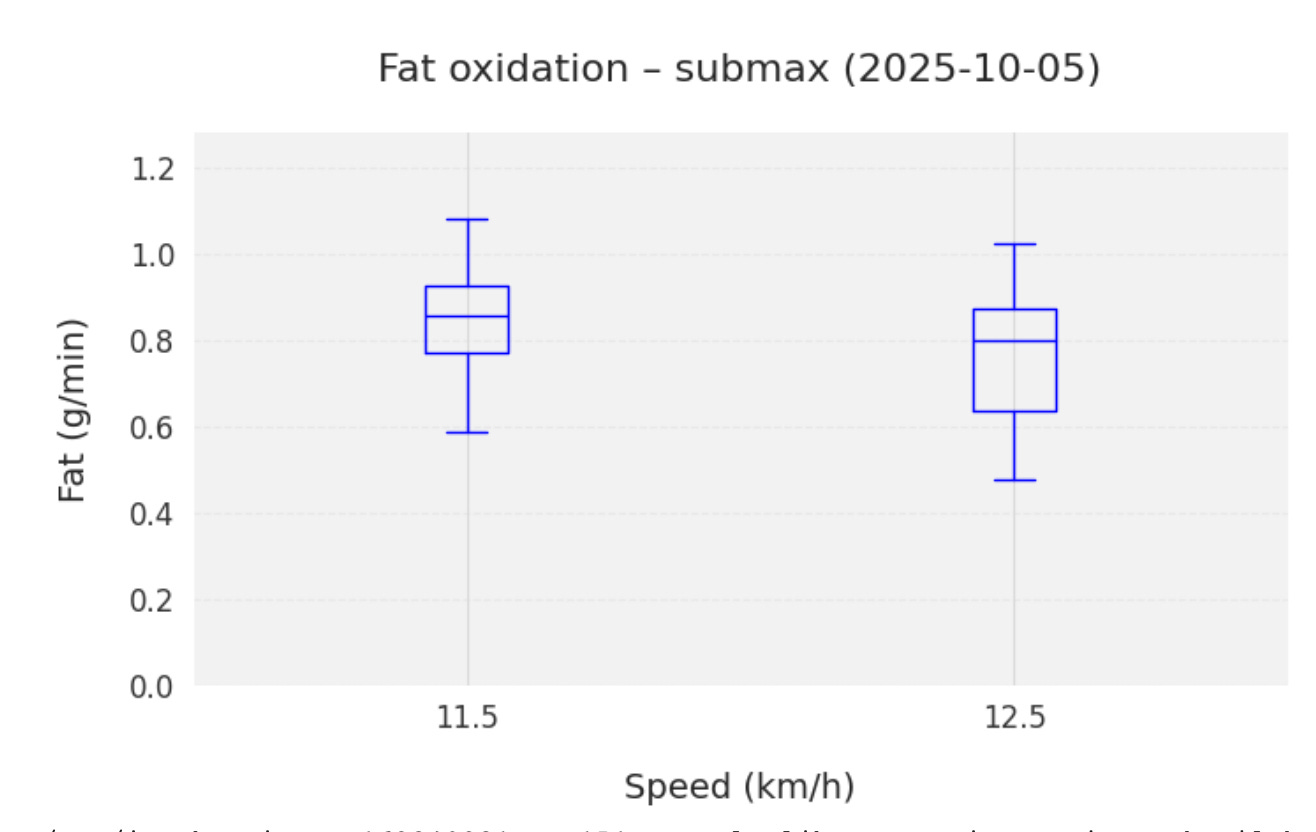


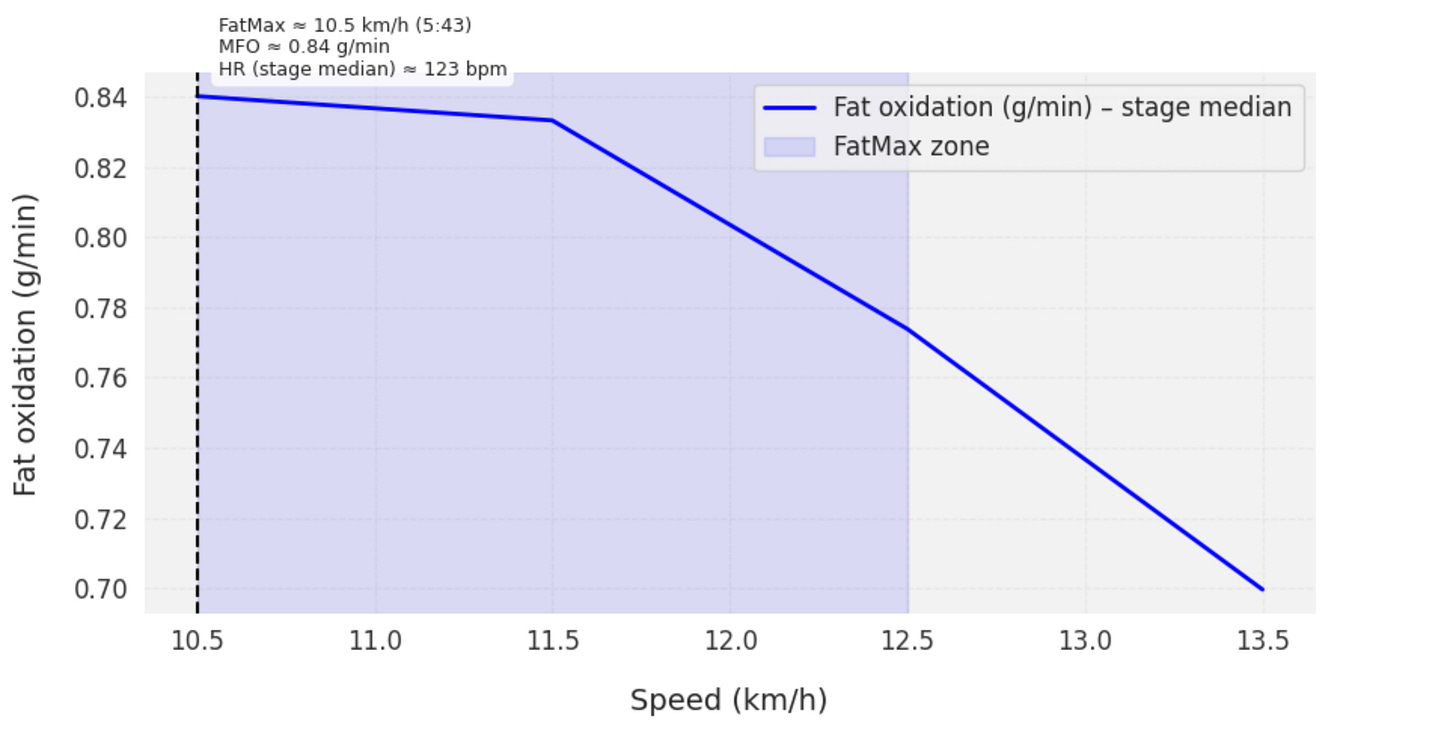
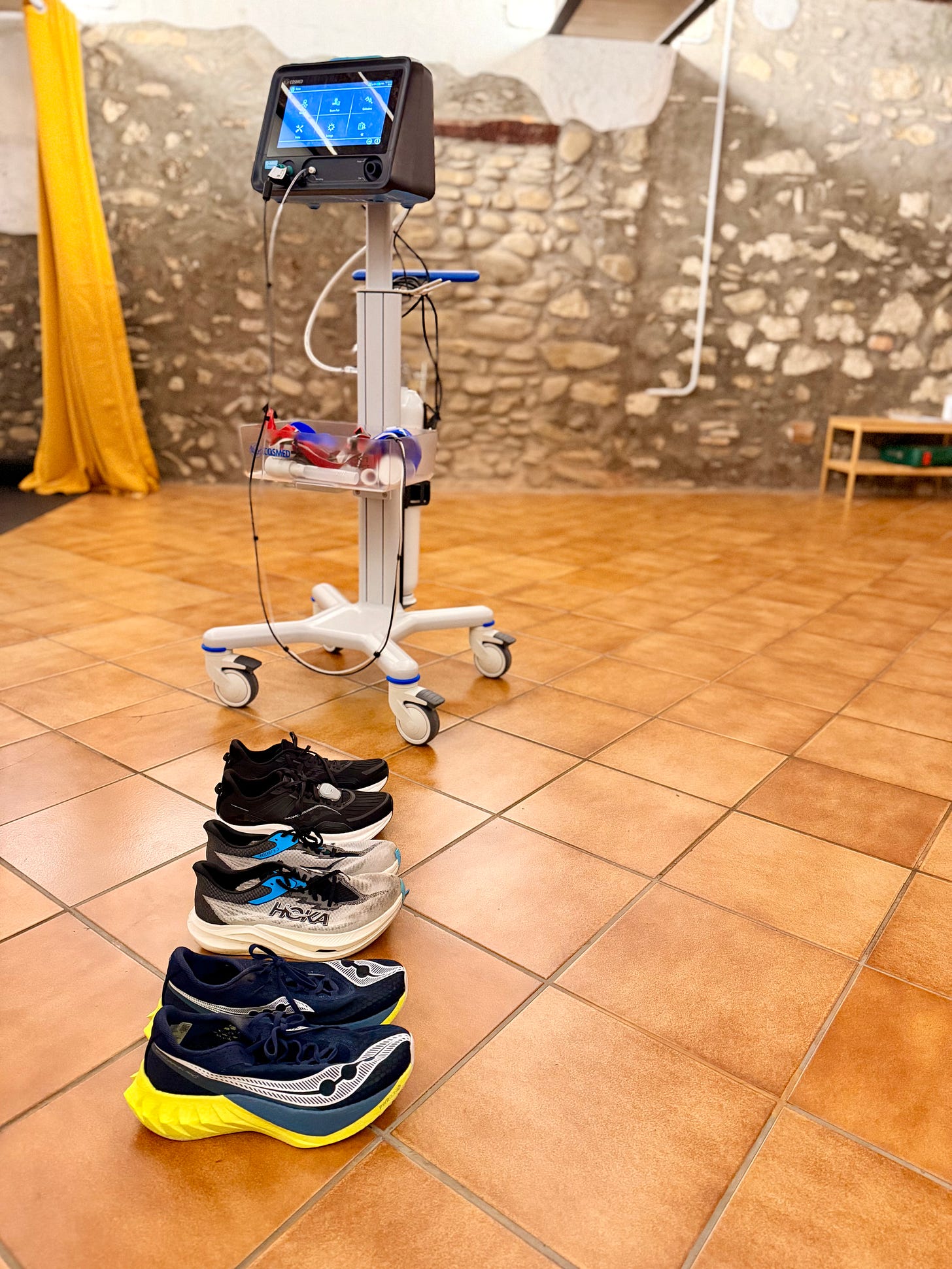
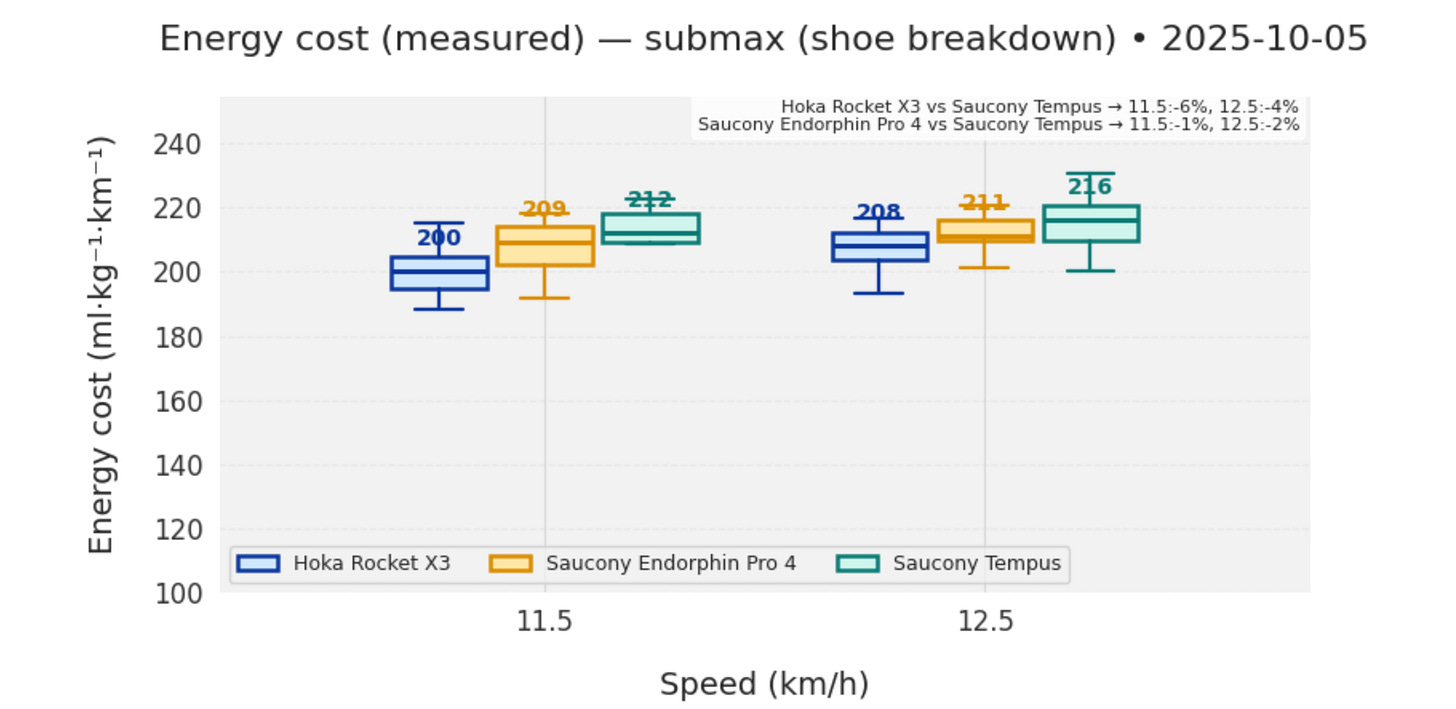
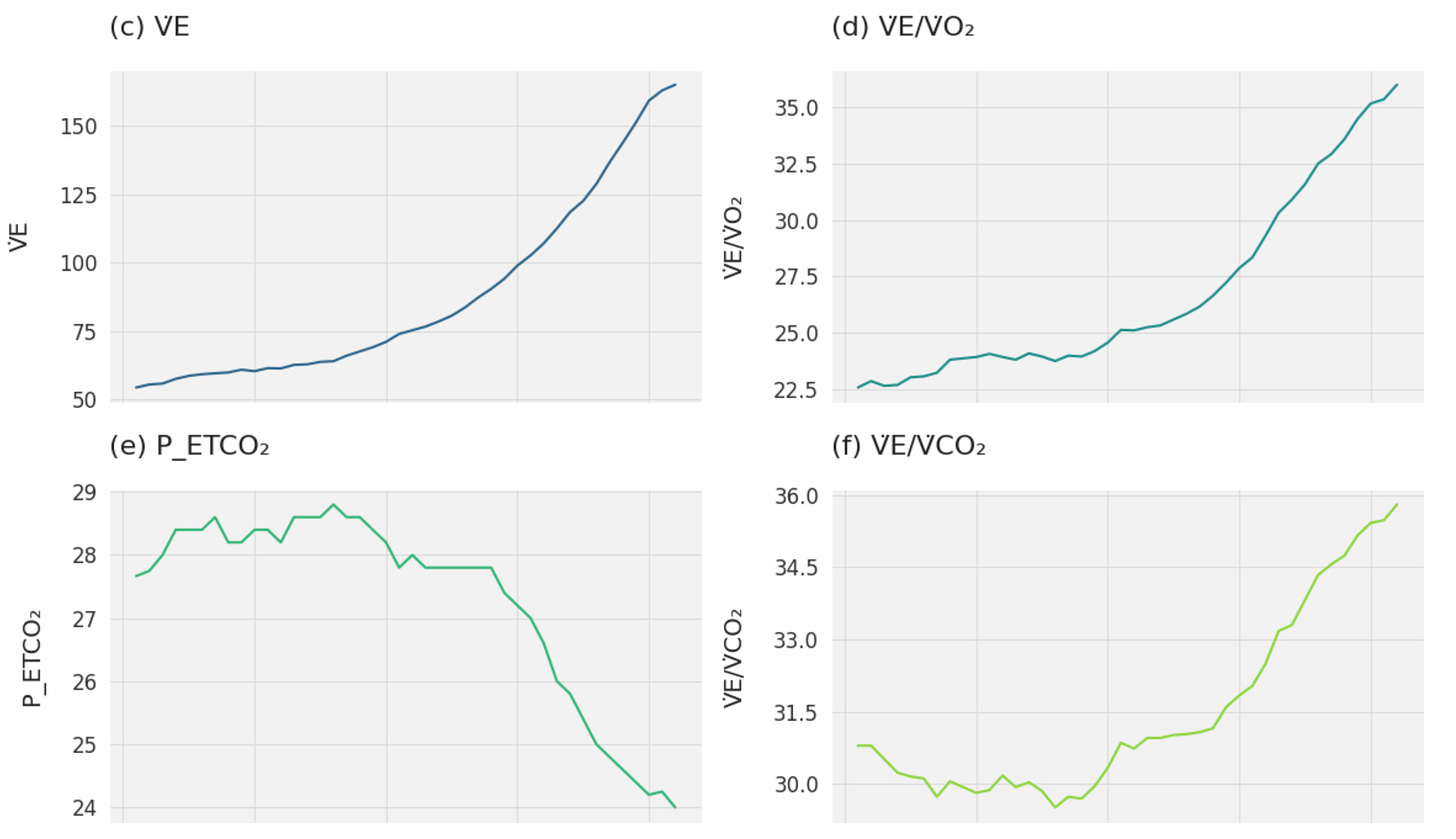


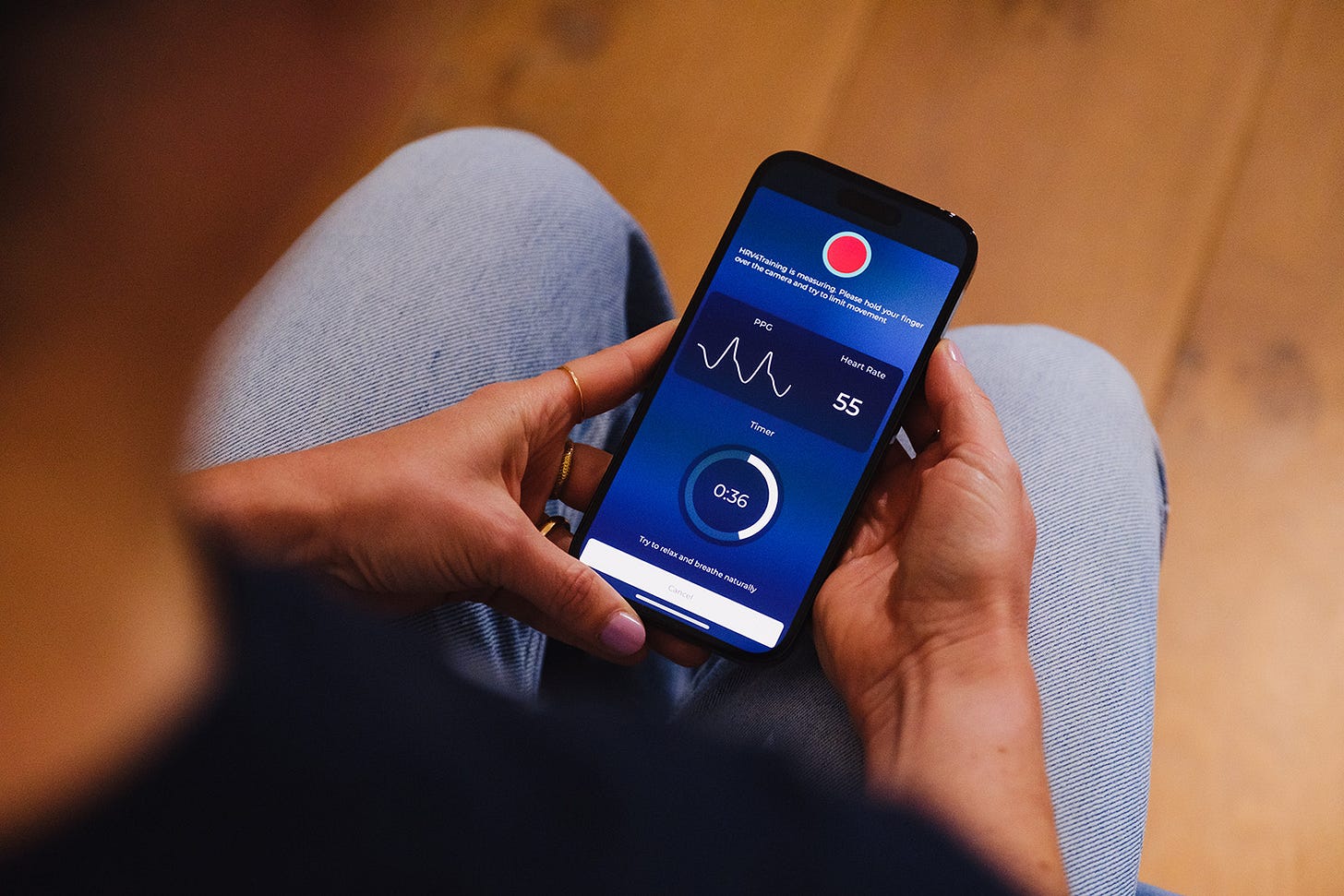
Hei Marco,
Interesting read as always, thanks.
What surprises me a bit is that in the article of Keir et al. you highlight, lactate is described as a byproduct/waste product. They don't even acknowledge (figure 1) that lactate is an important substrate for the Krebs cyclus. According to some it's the essential substrate (Lactate as a fulcrum of metabolism by George A. Brooks (Redox Biology 35, 2020)).
It doesn't make a difference in your analysis here, but I'm interested in your opinion on this.
How do you see the role of lactate in muscle metabolism during exercise?
Hi Marco, fascinating article as always. Two follow-up questions
1). Do you know anything about using DDFA from a heart rate monitor to measure thresholds? I get this data from pretty much every run
2). What are some primary ways to improve economy? I assume just running more is a big one, but is there anything we can do diet-wise or during our daily lives?